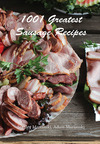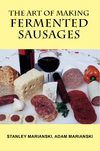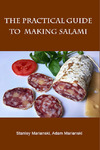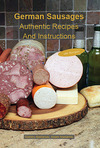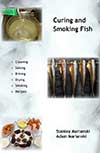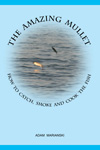Meats and Sausages
Fish-Fried
- Fish for canning should be strictly fresh. It is well to stick fish with a knife to drain out the blood as soon as they are caught. The viscera should also be removed as soon as possible.
- Scale or wash carefully. Scales are easier to remove if fish are dipped into boiling water and then into cold water. If skins are tough, skin the fish.
- In order to draw out the blood before canning, place fish in a brine made by using 1 tablespoon salt to each quart of water. Let fish soak 10 minutes to one hour, according to thickness. Small trout need only 10 minutes soaking. This soaking is not absolutely essential but makes for a better looking product. It tends to make fish firmer.
- Remove from brine, wash and drain on clean towels.
- Leave whole or cut into convenient, uniform pieces.
- Season fish before frying if they were not soaked in brine.
- Fry in deep fat till nicely browned. Drain and place on brown paper to remove excess fat.
- Pack into clean hot jars. Add about 2 tablespoon hot liquid. Add hot tomato sauce if desired and in that case use glass jars or R-enameled cans.
- Seal and process at once.
Tomato Sauce for Canned Fish
- 1 quart canned tomatoes
- 1 Tbsp chopped parsley
- 3 or 4 whole cloves
- Few drops Tobasco sauce
- 1 medium onion
- Piece of bay leaf
- 1 tablespoon Worcestershire sauce
Cook all ingredients until reduced to about half the original volume. Put through a fine strainer. This sauce may be put over fish in the jars before processing or served with fresh cooked or plain canned fish.
| Fried Fish | ||||
|---|---|---|---|---|
| Style of Pack | Container | Process Time | Canner Pressure at "0" ft | |
| dial-gauge | weighted-gauge | |||
| Hot | Jar-Pint | 100 min | 11 lb | 10 lb |
| Can-No.2 | 90 min | 11 lb | 10 lb | |
For processing at above 1,000 ft, see Altitude Adjustments.



